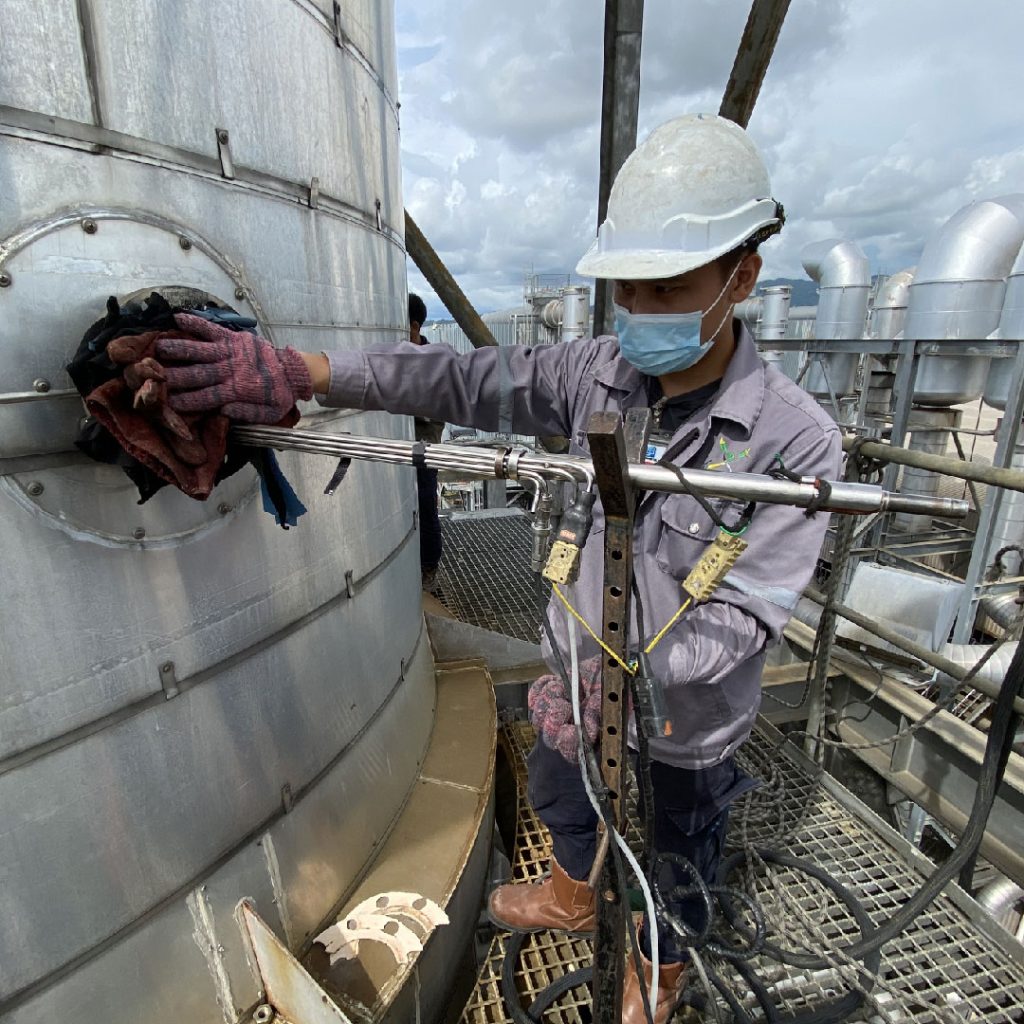Stack Emission Testing

What is Stack Emission Testing?
Stack Emission Testing, also known as source emissions testing, involves measuring pollutant levels in waste gas streams released into the atmosphere. These waste gas streams can contain various pollutants such as liquid, gas, solid, organic, and inorganic compounds. Different pollutants require specific testing methods. Stack Emission Testing is mandated under the Environmental Quality (Clean Air) Regulations, 2014. Industrial premises are required to conduct stack emission testing to evaluate the characteristics and concentration of waste gas stream emissions.
Why choose HGI?
HGI is a registered CEMS Tester with the Department of Environment (DOE), operating from three offices across Malaysia.
Key features of our top-notch emissions service include:
- Experienced Team – Our team has extensive experience and training with international source testing bodies like the Source Testing Association (STA) and the National Physical Laboratory (NPL) in the UK.
- Wide Coverage – With teams in three offices across Peninsular Malaysia, Sarawak, and Sabah, we ensure efficient operations, competitive rates, and value for money.
- Accreditation – We collaborate closely with ISO-17025 accredited laboratories to ensure accurate results and compliance with DOE regulations.
- Technical Excellence Center – Our new hub leverages the knowledge and practical experience gained from numerous stack testing and CEMS Performance audits, delivering trusted advice and solutions.
- Calibration Workshop – We personally maintain, calibrate, and performance-check our sampling equipment, enhancing our understanding for more accurate emissions data.
At HGI, we provide monitoring equipment, technical support, and customized tests to meet your unique needs. We test for a wide range of pollutants following DOE approved standards, including:
- Particulates
- Water Vapour
- Sulphur Dioxide
- Polycyclic Hydrocarbons (PAHs)
- Dioxins and Furans
- Isocyanates
- Total Mercury
- Ammonia
- Halogens & Halides
- Hydrogen Chloride
- Hydrogen Fluoride
- Metals
- Carbon Dioxide
- Carbon Monoxide
- Propane
- Oxides of Nitrogen
- Total Organic Carbon (TOC)
- Volatile Organic Carbon (VOC)
- Oxygen
- Pressure
- Temperature
- Velocity
Let’s Work Together
To speak to a member of our team about any of the services we offer, please fill out the contact form.
We aim to respond same day however it may take a little longer if your request is of a technical nature.
Bintulu, Sarawak (HGI Head Office)
Ground Floor, No.393, Lot 4049, Parkcity Commerce Square, 97000 Bintulu, Sarawak.
Sandakan, Sabah
Lot 6, 2nd Floor, Bandar Labuk Jaya (D), Phase 2 Mile 7, Labuk Road, 90000 Sandakan, Sabah.
Bukit Jalil, KL
Lot C 15-03, The Link 2, Jalan Jalil Perkasa 1, 57000 Bukit Jalil, Kuala Lumpur.
Services
Products
The information contained on this website is for general information purposes only. The information is provided by Hypergreen Instruments and while we endeavour to keep the information up to date and correct as much as possible. When you visit or interact with our sites, services, applications, tools or messaging, we or our authorised service providers may use cookies, web beacons, and other similar technologies for storing information to help provide you with a better, faster and safer experience and for advertising purposes.
Copyrigh 2023 © Hypergreen Instruments. All rights reserved. [MD]
